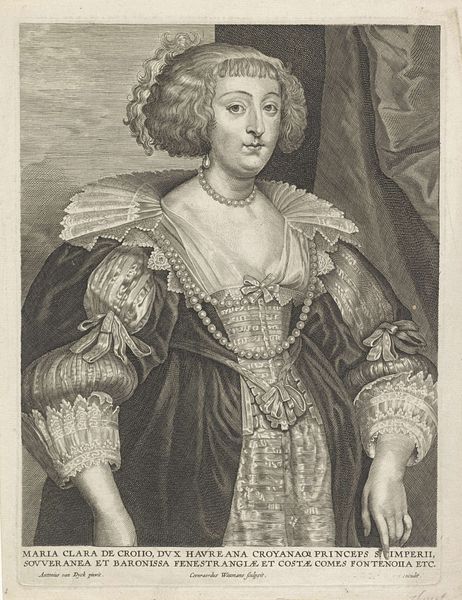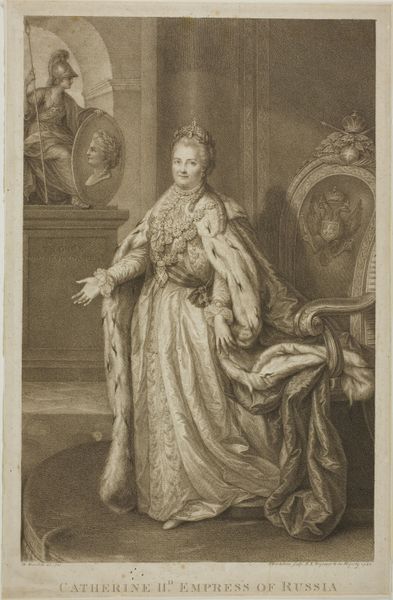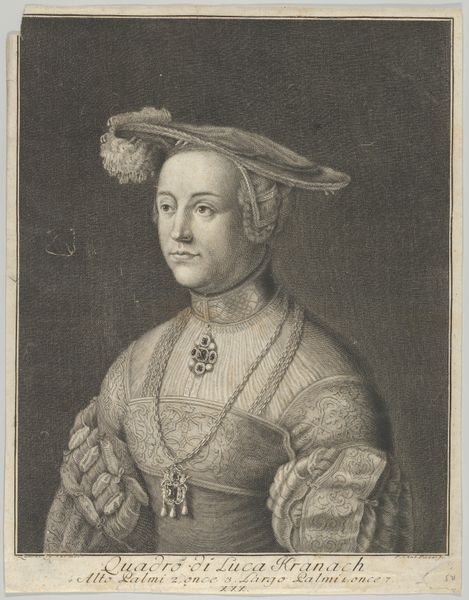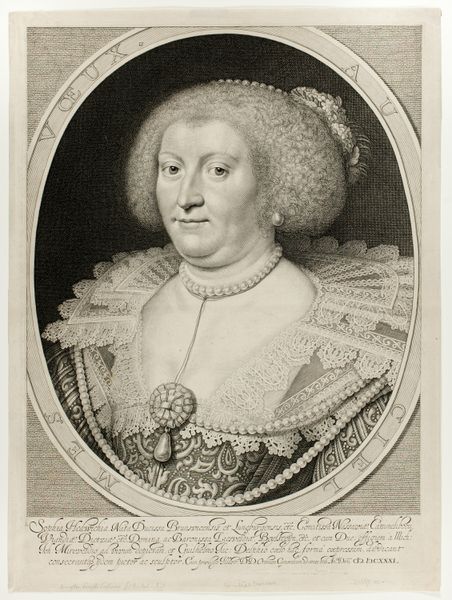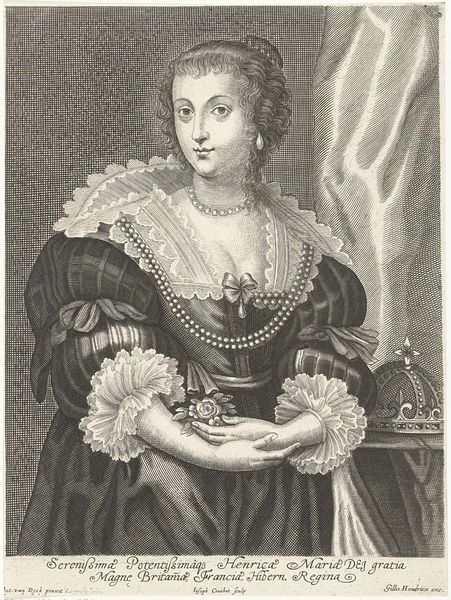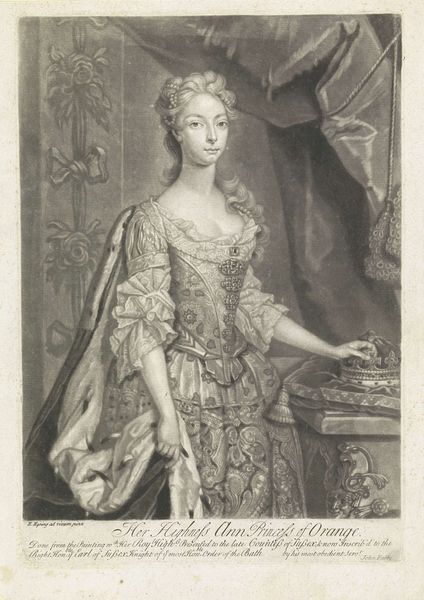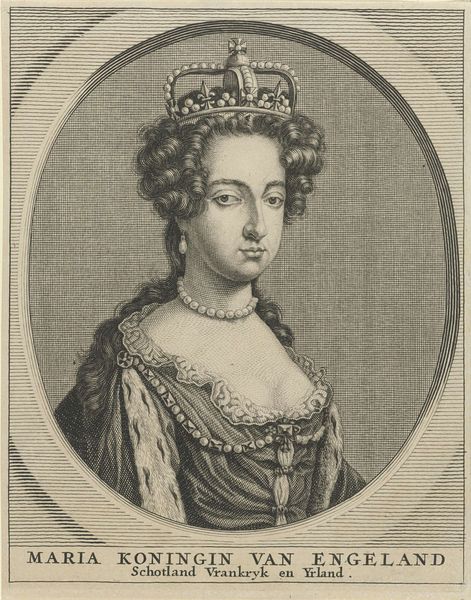
Portret van Elisabeth Stuart, echtgenote van Frederik V, koningin van Bohemen 1615
0:00
0:00
boetiusadamszbolswert
Rijksmuseum
engraving
#
portrait
#
old engraving style
#
figuration
#
line
#
portrait drawing
#
northern-renaissance
#
engraving
Dimensions: height 387 mm, width 290 mm
Copyright: Rijks Museum: Open Domain
Curator: This engraving, created in 1615 by Boëtius Adamsz. Bolswert, depicts Elisabeth Stuart, wife of Frederick V, and Queen of Bohemia. It’s a masterful example of Northern Renaissance portraiture currently housed at the Rijksmuseum. Editor: Whoa, just look at all the details! The intricacy is mesmerizing, almost hypnotic. But at first glance, I get a strong sense of formality, of restrained power. It’s as if she’s holding herself very deliberately for this moment, you know? Curator: Absolutely. Portraits of royalty in this period were incredibly intentional, serving as potent symbols of authority, status, and dynastic lineage. Every element, from the elaborate ruff to the strings of pearls, conveyed specific messages about Elizabeth's position. Consider the iconographic weight of each pearl. Editor: Yes, those pearls, like teardrops made precious! But beneath that veneer of royal performance, I sense a vulnerability. There’s a delicate quality to her expression, a hint of uncertainty, perhaps? Almost feels like she doesn't want to sit here at all. Curator: An astute observation. As Queen of Bohemia, her reign was brief and turbulent, lasting only a single winter. Her life was filled with political upheaval and personal hardship. Editor: I hadn’t thought about that, the “Winter Queen”. You almost forget the weight behind these faces in these super ornate portraits. It’s like this carefully constructed facade, intended to project strength, perhaps hints at the inner turmoil, even conflict, underneath. Curator: Precisely! Her clothing tells a silent narrative—it is a reflection of that power she possesses, even if held only tenuously. Consider, also, how portraits serve as a kind of cultural memory, preserving the likeness and the projected image of individuals across generations. They invite ongoing re-evaluation. Editor: Exactly. And seeing this engraving, knowing a little more about Elizabeth now, it gives it new resonance, a layer of emotional complexity I hadn’t picked up on initially. All these heavy lines are almost weighing her down. Curator: It speaks to the power of images to encapsulate entire life stories. Editor: A remarkable feat in detail and intricacy that almost feels as though its obscuring who she is. Thanks, Iconographer, I won't forget the "Winter Queen."
Comments
No comments
Be the first to comment and join the conversation on the ultimate creative platform.
